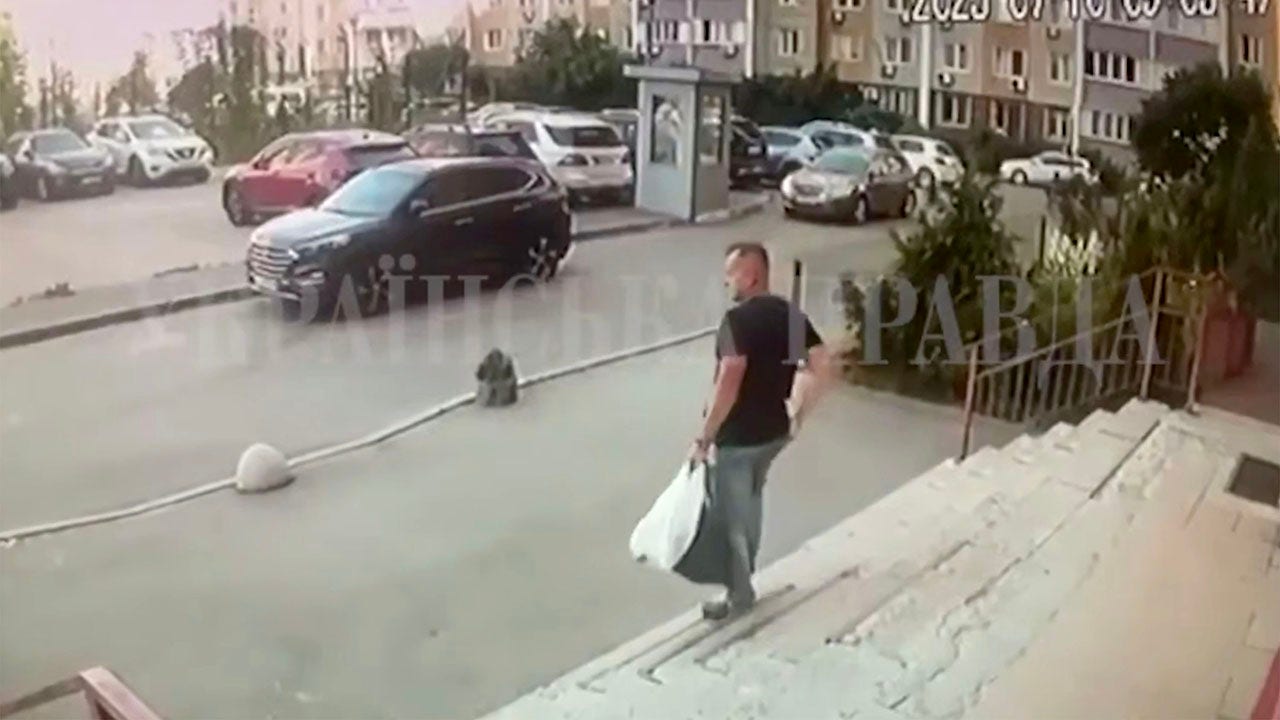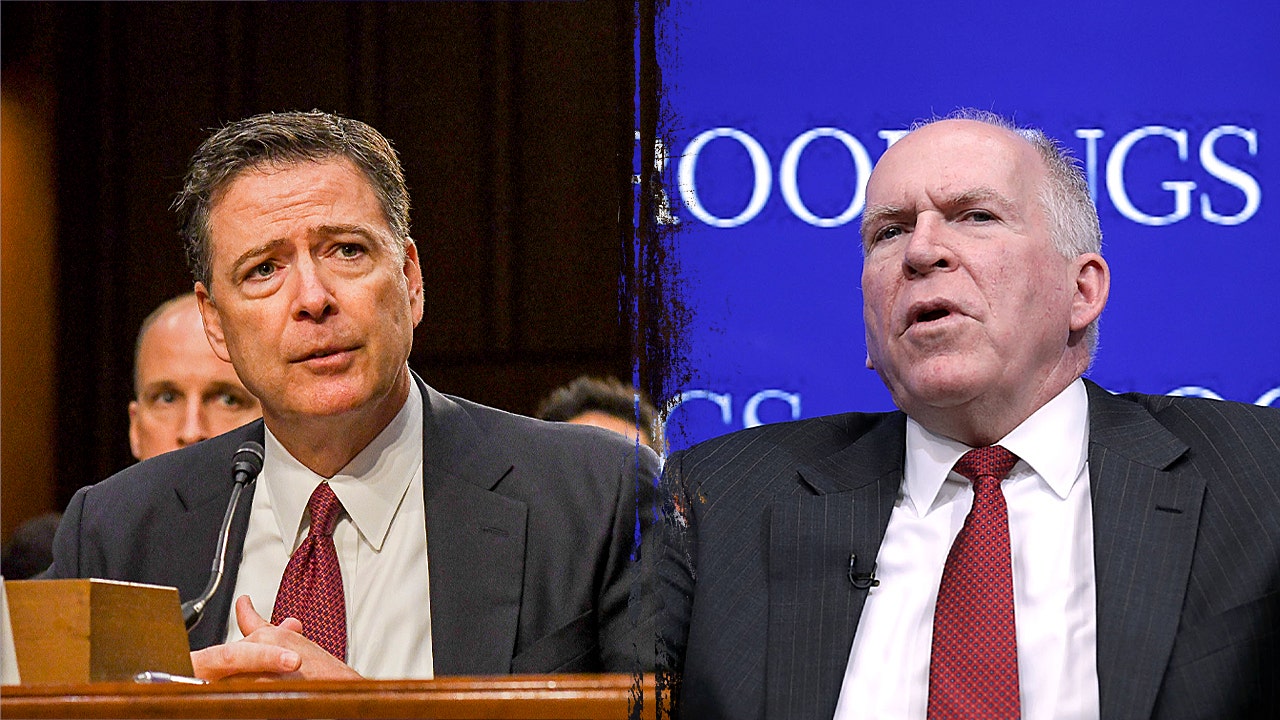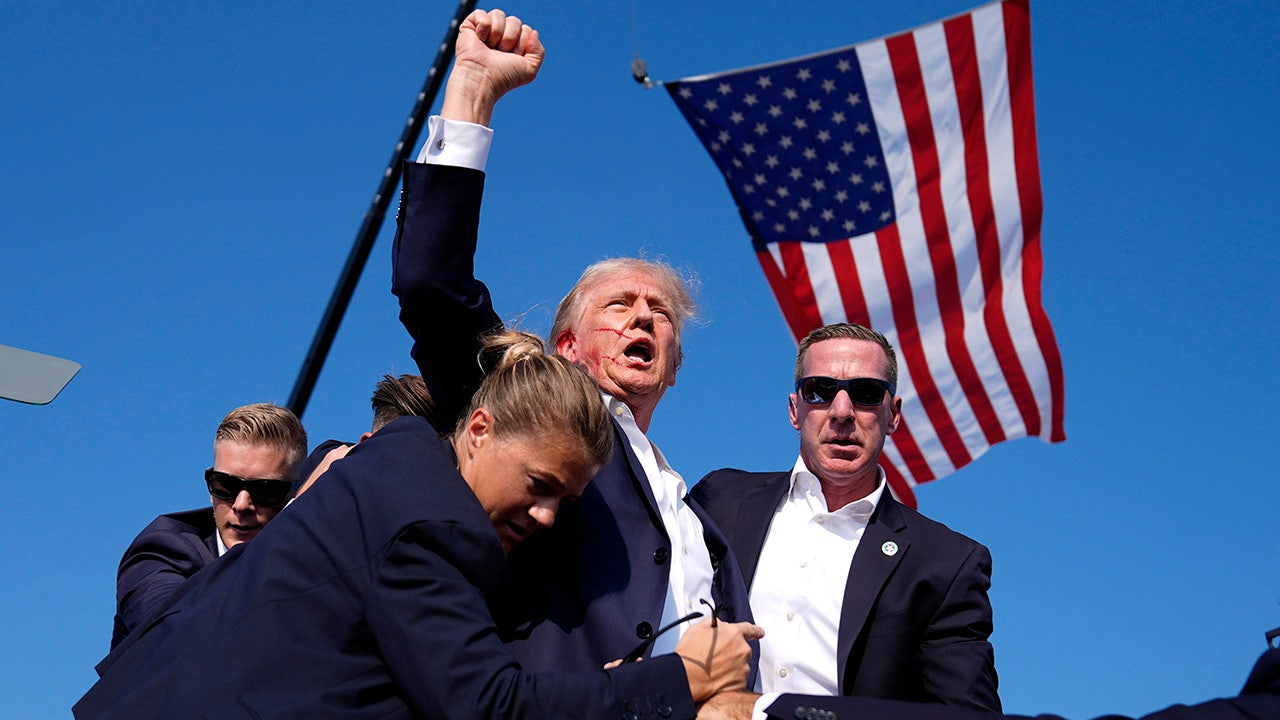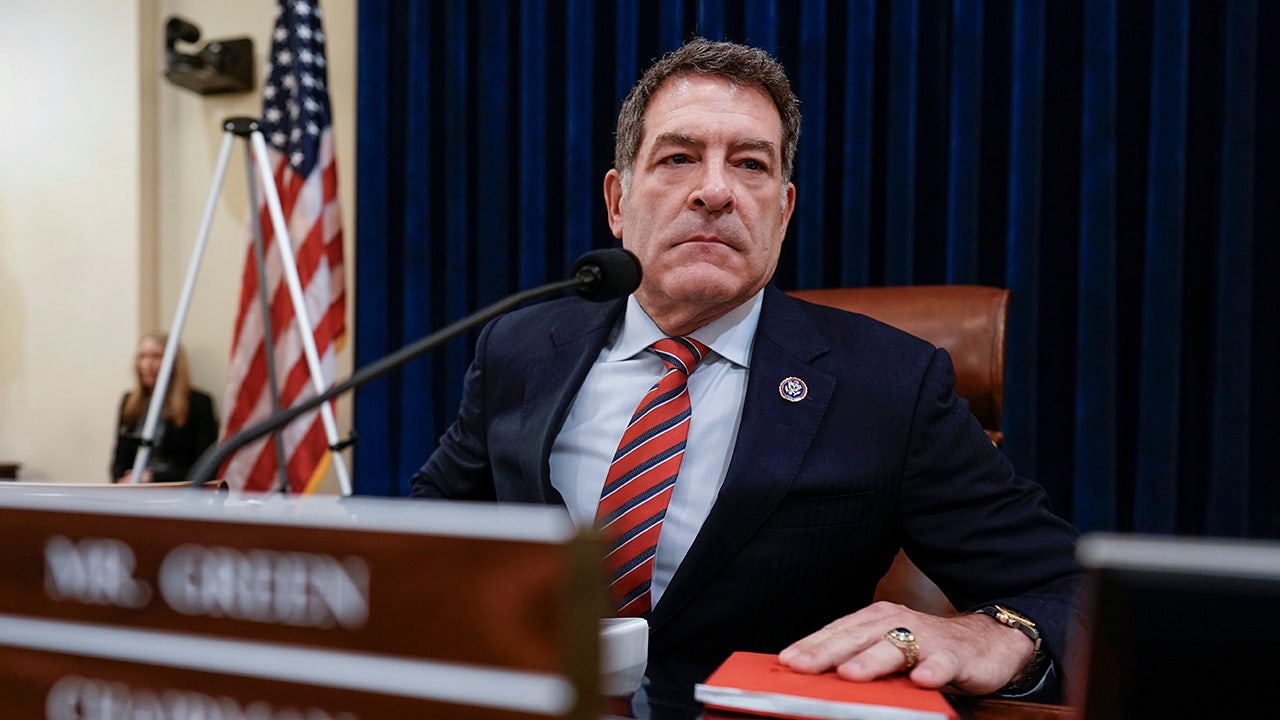Utah State University’s termination — with cause — of former head football coach Blake Anderson is a saga that has only just begun.
If it were a football game, each side would have had a pair of possessions at this point, but FBS teams averaged 12 possessions per game last season. Which is to say there’s a long way to go before any sort of real conclusion to Utah State vs. Blake Anderson.
Figuring out what each side — Utah State and investigators from the Kansas City-based law firm of Husch Blackwell are on one side and Blake Anderson and his attorney Tom Mars are on the other — contends happened can be daunting, since more than 65 pages of pertinent documents have been released, whether it be through GRAMA requests or through Mars’ redacted releases on X.
It is a lot for anyone to parse through, so here is an abbreviated accounting of what each side has to say.
Why Utah State says it fired Blake Anderson
In its official press release announcing the termination of Anderson, Utah State said the following: “This action is based on significant violations of his contractual obligations related to USU’s employee reporting requirements. These reporting requirements include a prohibition on employees outside the USU Office of Equity from investigating issues of sexual misconduct, including domestic violence. Additionally, Anderson failed to manage the team in a manner that reflects USU’s academic values.”
The university was more specific about its allegations in the four-page termination letter it sent to Anderson.
In it, USU states four reasons it elected to fire Anderson.
- Failure to submit a required report regarding an alleged crime and violation of USU policy.
- Significant violation of university rules by an employee under your supervision.
- Failing to perform the duties of coach in good faith.
- Failure to manage the team in a manner that reflects the academic values of USU.
Anderson and his representation dispute all four points, but more on that later.
Setting the stage for USU vs. Blake Anderson
Understanding the investigation that led to Anderson’s firing means understanding what started it all.
According to court records obtained by the Deseret News, many of which have since been released to the public by Mars, Anderson’s termination as USU’s football coach goes back to an incident in April 2023.
On April 5, 2023, a former Utah State football player was arrested by the North Park Police Department for two misdemeanor offenses:
- Domestic violence in the presence of a child
- Assault
According to the Affidavit of Probable Cause, the arresting officer “arrived on scene and found the victim with marks on her neck. When asked how she received the marks, (the officer) was told that (the former USU player) was pulling on her hoodie which caused her to be choked. One of the bruises on her neck matched that of the draw string from her hoodie. A witness stated that she heard a female screaming, ‘get off of me’ and ‘you are choking me.’ When the witness ran outside to see what was happening she found (the former USU player) standing over the female victim, holding her down. (The former USU player) did have a baby with him at the time of the incident.”
What Blake Anderson contends happened next
Anderson says that the following series of events occurred around the time of the April 2023 arrest, as detailed in his response to USU.
He notes that he met with the player on April 4 in response to hearing rumors that the player was thinking about transferring from Utah State.
On April 6, the day after the arrest, the former Aggie football player missed a breakfast check and Anderson called him and left a voicemail. Later that morning, upon hearing a rumor that the player had an emergency that involved taking his child to the hospital, Anderson sent a follow-up text. The former player then called Anderson back and told him that he had taken his child to the hospital, according to Anderson’s account.
Anderson then didn’t talk to the player again until April 11, with Easter weekend sandwiched in between the communications between coach and player.
Anderson said he heard rumors on April 11 that the former USU player had been arrested earlier in the month, and asked Austin Albrecht, the now former director of player development, to look into it. Anderson then met with the player later that afternoon, and during that meeting, the player admitted that he had been arrested.
At this point, Anderson said that neither he nor Albrecht nor the player had been able to determine what the charges were, and Anderson was “left with the impression the player was arrested for disorderly conduct.”
The following day — April 12 — Anderson said he called interim athletic director Jerry Bovee three times, updating him in the morning and again in the evening. In the final conversation between the two that day, Anderson said Bovee told him he “would make a ‘group report’ to the Equity Office to be on the safe side even though they weren’t sure what they were dealing with.”
What the Husch Blackwell report contends happened
The investigators hired by Utah State were largely in agreement with Anderson’s recollection of events up to this point in the timeline.
Their report reads, in part, “Coach Anderson’s description of the sequence in which he learned of Student Athlete’s arrest, took steps in response, and communicated with others thereafter was generally consistent and direct. Also, after reviewing documents relating to the arrest information in Spring 2023, Coach Anderson provided a reasonably specific chronology of relevant events during a two-week period following the arrest. Coach Anderson reported that he learned from the football team’s Director of Player Development that Student Athlete had been arrested for domestic abuse without further details. That same day, Coach Anderson met with Student Athlete, who told him of the arrest but said he had not done anything wrong and that his girlfriend would support him.”
From this point on, there is very little that Anderson/Mars and that Utah State/Husch Blackwell investigators agree on. Or at the very least, there is little that both sides agree was done properly.
What Blake Anderson contends happened next
Anderson said that on April 13 he met with the former USU football player again, and that the player provided him with a pair of witness statements — one from the mother of the player’s child, the victim of the alleged assault, and one from the player’s roommate, another USU football player. Both statements claimed that the USU football player in question did nothing wrong.
There is no mention in Anderson’s account that he asked for witness statements. Only that he received them.
Anderson said that he then forwarded the witness statements to Bovee (though he is fuzzy on the exact date, noting that it was either on April 13, April 14 or April 15).
On April 17, the former Utah State football player entered the NCAA transfer portal and was removed from Utah State’s roster, prior to his transfer.
What the Husch Blackwell report contends happened
The report from investigators accepts Anderson’s timeline of events, but investigators find fault in the actions that Anderson took.
Failure to submit a required report regarding an alleged crime and violation of USU policy
The first reason Utah State listed as to why Anderson was terminated involved the failure to submit a report about the arrest of the USU football player.
As a reporting employee, Anderson had an obligation — per USU policy 340 — to “report all information (he received) concerning incidents of sexual misconduct to the Title IX coordinator.”
The policy says that reports have to be submitted within 24 hours of learning about the incident and that “reporting employees must submit incident reports using the online form at equity.usu.edu and must include all known information disclosed to the reporting employee.”
What the Husch Blackwell report contends happened
While the Husch Blackwell investigators accepted that Anderson notified Bovee — his superior — about the domestic violence incident, it found that he did not directly alert the Office of Equity, which he was required to do via an online submission, per university policy.
Anderson was upfront in interviews with the investigators that he didn’t do that.
The Husch Blackwell report said, “Coach Anderson confirmed that he learned about Student Athlete’s arrest for domestic violence and acknowledged that he never reported that arrest to the Office of Equity, stating that he was not aware he needed to do so given that the altercation occurred off campus and was ‘dealt with by the authorities.’ The evidence gathered during the investigation, including Coach Anderson’s own statements, demonstrates that Coach Anderson failed to fulfill his reporting obligations under Policy 340.”
What Blake Anderson contends happened
Anderson and Mars argue, though, that while Anderson didn’t report directly to the Office of Equity, his reporting to Bovee was sufficient under his own employment agreement. That agreement, according to Mars, said that Anderson must “confer with, report to and follow the AD’s directions with respect to all matters related to the football program.” Mars added, “There is no carve-out in Coach Anderson’s contract that allows him to bypass the chain of command for Title IX matters.”
Anderson and Mars also contend that due to the nature of the domestic violence incident — more specifically, where it happened — Anderson had no responsibility to report it to the Office of Equity in the first place.
Citing new Title IX regulations adopted by the the Department of Education Office of Civil Rights, Anderson’s response notes that the incident didn’t occur “either on university property, by using a school’s computers, in a situation where the university exercised ‘substantial control’ over the accused in the context in which the incident occurred, or in an off-campus fraternity or sorority house.”
Anderson’s response says that means that “under both federal and state law, the jurisdictional definition in each of those policies makes them inapplicable to the off-campus incident involved here. As explained in the following discussion, the jurisdictional limitations in USU’s ‘Non-Title IX’ policies are not even debatable. None of the USU policies Coach Anderson supposedly violated required him or anyone else to report anything to the Equity Office.”
‘You took it upon yourself to investigate the matter’
The school’s most significant accusation against Anderson is likely that he conducted an investigation into the domestic violence incident himself by interviewing the former USU football player, his child’s mother (the alleged victim), as well as his roommate (another player on the football team).
In the termination letter, USU athletic director Diana Sabau argues that this offense was grievous.
“I find that your actions were not only significant violations and material failures to comply with USU’s policies but wholly unprofessional, inappropriate, and counter to the expectations for USU leaders,” she wrote. “In carrying out this action, you interfered with the role and responsibilities of the Title IX coordinator and did so while a criminal action was pending. Undertaking this investigation undermined the goals of Policy 340 and USU’s commitment to addressing sexual misconduct. This is unacceptable and amplifies USU’s bases for terminating your employment.”
What the Husch Blackwell report contends happened
The Husch Blackwell investigators argue that, during their interview with him, Anderson confirmed that he undertook “investigation efforts.”
They wrote that, “Coach Anderson acknowledged that, after he learned about Student Athlete’s arrest, he engaged in investigation efforts by meeting individually with Student Athlete, his girlfriend, and his roommate to discuss the arrest and underlying incident. Based on those meetings, Coach Anderson solicited written statements from each witness describing their recollection of events, which he subsequently forwarded to Mr. Bovee. Coach Anderson told the Investigators that he did not know what to do about Student Athlete’s arrest because he did not want to suspend him if he had not done anything wrong. He explained that he and Mr. Bovee decided to investigate and obtain more facts (which Coach Anderson described as a ‘fact-finding mission’) before taking further action. Consistent with University policy, the Office of Equity should have been engaged for any investigation, not Athletics Department personnel.”
What Blake Anderson contends happened
For his part, Anderson argues that he did not conduct an investigation. He calls what he did a “fact-finding” mission to determine if the incident needed to be reported at all.
Anderson said that he talked to the former USU football player to try and find out what he was in trouble for. When it comes to interviewing the player’s child’s mother and the player’s roommate, though, all Anderson says happened is that he was provided with a pair of witness statements from the two, not that he solicited them.
Anderson and Mars shared text communication between Anderson and the victim in the alleged domestic violence incident. The communication appeared to be about the drop off of the letter she had written.
“Coach Anderson did not conduct his own ‘Title IX investigation’ before a report was made to the Equity Office,” Anderson’s response reads. “Instead, Coach Anderson had no knowledge that an arrest had occurred for several days, then spent just over a day attempting to find out what his player was arrested for and why to determine whether any report was required.”
Significant violation of university rules by an employee under your supervision
The second main reason offered by USU as to why Anderson was terminated centers on his management of his employees.
Specifically, Utah State contends that Anderson did not advise staff members under his supervision to report on the domestic violence incident, despite them being aware.
“At least two football staff members disclosed the student athlete’s arrest to you, and did not file a timely report as required by USU Policy 340.4,” the termination letter reads. “These staff members were under your direct supervision, and there was no evidence that you made any effort to advise them to file the required reports or otherwise prevent their noncompliance with USU Policy 340. See Investigation Findings and Conclusions. Under the Agreement, you are responsible for promoting an atmosphere of compliance within the football program, and you are required to monitor the activities regarding compliance of all assistant coaches or other administrators involved with the program.”
What the Husch Blackwell report contends happened
The report from the investigators that is now available to the public is light on detail regarding this point. But, as a reminder, it is a summary of the full report — the complete unabridged report remains unreleased.
The report mentions other witnesses with varying accounts and knowledge of the events, though it focuses on Anderson and Bovee as the individuals with the most knowledge.
“Witnesses reported varying accounts of their knowledge of the basic information contained in the incident report to the Office of Equity, including: when and how people initially learned Student Athlete had been arrested; initial reactions taken in response to learning of the arrest; and why Student Athlete was not suspended or otherwise disengaged from the team until he notified Athletics Department personnel of his decision to enter the transfer portal,” the report reads. “The most significant information regarding these issues came from Coach Anderson and Mr. Bovee.”
What Blake Anderson contends happened
Anderson contends that, upon hearing rumors of an arrest, he tasked Albrecht to look into the matter. Albrecht did not have much success, though, reporting back to Anderson that he was “unable to obtain any more information about the charges, if any, as none had been filed.”
Anderson and Mars focus more on the phrase “you are responsible for promoting an atmosphere of compliance within the football program” than anything else in their defense against USU’s claims regarding this point.
They argue that, “None of the precedents or NCAA guidance support the proposition that conclusory allegations based on a single incident could sustain a charge of failing to ‘create an atmosphere of compliance and monitor compliance.’”
Failing to perform the duties of coach in good faith
The third reason given by Utah State to explain why it fired Anderson centers largely on the lack of a suspension for the former USU football player prior to his decision to transfer — and on what that lack of discipline taught the rest of the football team.
“The report raised concerns about inconsistent treatment of student-athletes and a demonstrated resistance to making disclosures of negative information about student-athletes outside the Athletic Department,” the termination letter reads. “Further, the Investigation Findings and Conclusions found that the failure to take action against the student-athlete could have indirectly communicated to other football team members that such issues were not always taken seriously.”
What the Husch Blackwell report contends happened
The report from the investigators did not hold back about the suspension — or, more specifically, about the lack of one.
It was one of four major issues with how Anderson handled everything, according to the investigators. The report says that “many people described a practice of automatically suspending student athletes arrested for sexual misconduct or domestic violence,” but Anderson did not, instead describing the need for a “collaborative conversation” between he and the athletic department to determine the next step regarding a student-athlete.
All those who were interviewed agreed that Anderson did not suspend the former player, even after it was determined that he was arrested for domestic violence.
“Instead of following the Department’s typical practice, Coach Anderson chose to initiate his own investigative efforts that focused on gathering Student Athlete’s explanation about what happened and then seeking witness statements supporting his defense,” the Husch Blackwell report reads. “And, allowing Student Athlete to continue being part of the team despite being arrested for domestic violence, could have indirectly communicated to other members of the team that such issues were not always taken seriously.”
The report noted that the player was a star for the team and that during a meeting with university administrators only a couple of weeks after the arrest — a meeting focused on engaging athletic department personnel in helping USU monitor “climate issues within the football program (relating to sexual misconduct issues)” — Anderson failed to disclose any and all information about the player’s arrest.
The investigators noted that Anderson’s actions reflect “what appears to be an effort to address such issues ‘in house,’ within the Athletic Department. That is squarely contrary to applicable policies and the mission of the University.”
What Blake Anderson contends happened
Anderson has two main arguments against this part of the report.
First, he said no one asked him a question in the aforementioned meeting that would have required he talk about the former USU player, who had, by that point, transferred from the university.
Additionally, Anderson argues that he didn’t volunteer information about the incident in the meeting because he “knew that the matter had been turned over to the Equity Office for handling.” Anderson contends that disclosing information about the incident did not feel like the “right thing to do,” given he knew few people in the meeting.
As to why Anderson didn’t suspend the player, Anderson claimed that he could not suspend the player without the stated approval of the athletic director, per USU athletic department guidelines. Also, he argues that there was no requirement to suspend the player for the incident, per the 2022-23 USU Student-Athlete handbook, which says: “If an individual is found responsible for violating USU policy, that individual may receive a sanction ranging from a warning to expulsion from the University.”
Anderson and Mars focus on the “may receive a sanction” part, noting “Therefore, to the point we were making, a student-athlete who is accused of ‘Sexual Misconduct’ will not face automatic or immediate suspension.”
Failure to manage the team in a manner that reflects the academic values of USU
The fourth and final reason given to Anderson to explain his termination as football coach at Utah State centers on academics.
Specifically, academic progress rate, or APR.
Per the termination letter, the football team’s low APR “does not meet USU’s expectations and academic values,” and invites a “risk of both ineligibility and public embarrassment and disrepute.”
What the Husch Blackwell report contends happened
The summary of the investigators’ report does not touch on this issue.
In the termination letter sent to Anderson by Utah State, though, Sabau notes that she had previously addressed the issue with Anderson, and that he had failed to “directly engage and actively collaborate with academic support services and to track and enforce academic performance standards of your student athletes.”
That failure and “the poor academic performance of the USU football program is unacceptable and provides a separate basis for termination,” the termination letter reads.
What Blake Anderson contends happened
Anderson and Mars argue that Utah State had no basis to fire Anderson with cause in regards to APR, and that there is no precedent for it in college sports.
Per their response, there is no mention of APR in Anderson’s contract. If it had been important to the university, APR-related requirements could have been added as an amendment, they argue.
Furthermore, they contend that APR “is not an accurate description of the information it reflects,” and that APR is determined by “both academic eligibility and retention of student athletes. Retention scores are now effectively fluid, and have been over the last several years, given Covid-19 accommodations and the ever-changing NCAA transfer and waiver policies. Thus, APR scores include information not only outside the scope of USU’s ‘academic policies,’ but are subject to immediate modification.”
Anderson and Mars do not dispute that USU’s APR scores are low, but contend that, by traditional academic metrics, Anderson’s football teams have been satisfactory.
“As reported by USU in press releases and on its website, Coach Anderson’s football teams have exceeded USU’s minimum grade point average and have consistently been in good standing by always satisfying the NCAA’s “grade point average rule,” Anderson’s response reads. “USU has also reported that the football team’s collective average GPA has consistently been well-above the minimum during Coach Anderson’s tenure, ranging from 2.8 to 2.92. After boasting about the academic performance of the Aggie’s football team for the past several years, it’s difficult to understand why USU now wants to fire its head football coach on grounds that he didn’t perform some magic to make his players smarter.”
What each side ultimately contends
Anderson and Mars believe that Utah State is trying to get out of paying him the $4.6 million owed in his buyout. They argue that “the many grounds on which USU claims to have reason to have fired Anderson with cause, is a clear signal that the university doesn’t have confidence in any of its grounds for termination.”
In the end, Anderson and Mars believe that Utah State owes Anderson “not only the full amount of his ‘buyout’ but also a retraction of its defamatory press release and a public apology.”
Utah State, meanwhile, contends that Anderson “failed to acknowledge his responsibilities as a USU employee and as a head coach and instead sought to make excuses and unsuccessfully recast the clear language of USU’s policies.”


























